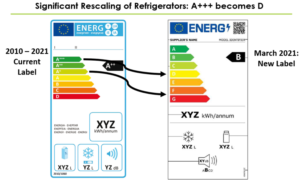EU Adopts Landmark Policies for Appliance & Equipment Sustainability
In October 2019, the European Commission adopted new regulations to promote energy-efficient, sustainable appliances and equipment across the European market.
In October 2019, the European Commission adopted new regulations to promote energy-efficient, sustainable appliances and equipment across the European market. Together with energy labeling requirements adopted in March, the sweeping package of regulations is expected to avoid 331 megatons of CO₂ cumulatively by 2030 and save each European household an average €150 (US$165) annually on energy bills.
The new rules were finalized under the EU’s Ecodesign Directive. They will reduce electricity consumption by 167 TWh per year by 2030, equivalent to 5% of the region’s total residential electricity use today, and require easy product reparability and recyclability in accordance with the EU’s Circular Economy Strategy.
CLASP supported the package over the course of five years with inputs on testing, market data and international best practices, as well as analysis of the costs and benefits associated with various levels of policy ambition for lighting, televisions, computer monitors, commercial signage, residential and commercial refrigerators, and transformers. Europe team members Marie Baton and Michael Scholand supported development of nine ecodesign and energy labeling policy measures that together represent 87% of the annual carbon reductions in 2030.
“CLASP Europe has supported the Commission since 2009. We are elated that on the tenth anniversary of our engagement in Brussels, such a ground-breaking package of policy measures was adopted,” CEO Christine Egan said.
Miguel Arias Cañete, European Commissioner for Climate Action and Energy, said efficiency will play a growing role in Europe’s long-term decarbonization strategy. “Ecodesign is … a key element in the fight against climate change and a direct contribution to meeting the goals set in the Paris Agreement.”
Notably, the labeling policies which accompany these standards are the first to re-scale the energy label back to an A through G scale (with A being the best), rather than A+++, A++, A+, A, and so on, which resulted in most products being clustered in the highest classes. According to a 2013 CLASP evaluation, the A-heavy system confused consumers and significantly altered the motivational effect of the top efficiency class. Our conclusions led the European Commission to transition back to the original A-G scale, in accordance with international best practice.
Beyond the return to an A to G scale, the new labeling regulations represent a significant increase in stringency. Indeed, in the rescaling, products that are currently in the top energy classes are being rescaled to the lower range of the new label. Member states and others are now better positioned to promote and leverage the label for maximum market impacts. The figure below visualizes the rescale for refrigerators (A++ is being rescaled to D, and A+ to F and G).

Nils Borg, Executive Director of the European Council for an Energy Efficient Economy (eceee) said, “Adoption of this package was a true team effort, engaging stakeholders, NGOs and Member States from across the political spectrum. CLASP was an integral part of that equation, providing technical expertise and analysis that underpinned our ambitious positions and led to stronger policy outcomes.”
